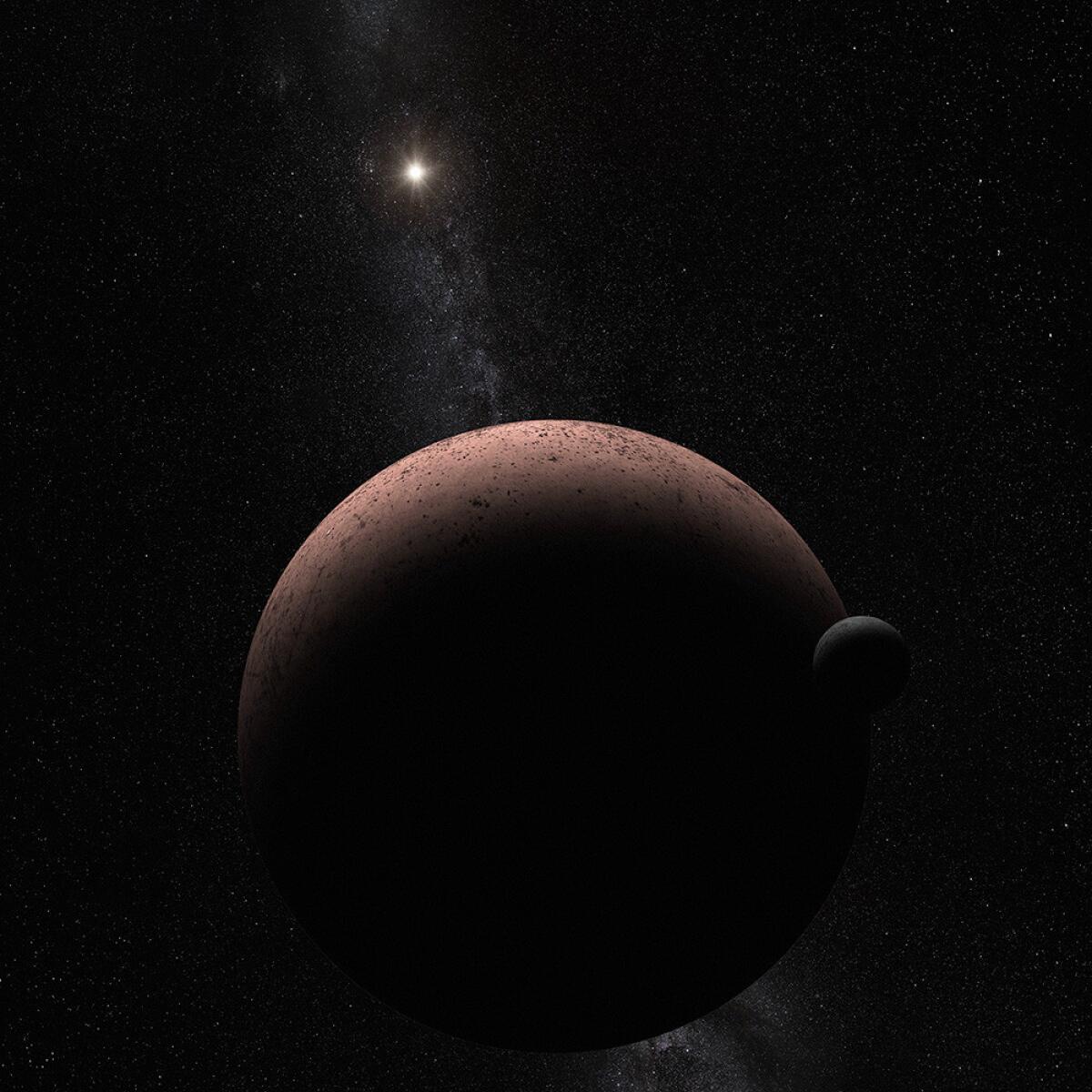In the outer solar system, Hubble spots a moon orbiting dwarf planet Makemake

An artist’s conception of the dwarf planet Makemake and its newly discovered moon.
- Share via
The Hubble Space Telescope has spotted a coal-black moon orbiting a shiny red dwarf planet known as Makemake in the outer reaches of the solar system.
The newly discovered moon is estimated to be 100 miles across and it orbits the dwarf planet at a distance of just 13,000 miles. For comparison, our own moon has a diameter of 2,159 miles and orbits the Earth from an average distance of 238,855 miles.
Makemake and its moon orbit the sun from a part of the solar system known as the Kuiper Belt. This region is also home to Pluto and the dwarf planets Haumea and Eris as well as hundreds of thousands of little-known worlds.
See the most-read stories in Science this hour >>
Makemake itself was only discovered in 2005. It is named for a creation diety of the Rapa Nui people of Easter Island.
Astronomers had looked for moons around Makemake in the past, but it wasn’t until observations with the Hubble Telescope were made in April 2015 that they finally spotted one.
There were a few reasons the newly discovered moon, nicknamed MK 2, was so hard to find, said Alex Parker, an astronomer at the Southwest Research Institute in Boulder, Colo., who led the image analysis for the observations.
Part of the problem is that Makemake is so shiny. According to Parker, the dwarf planet’s surface reflects 82% of the light that hits it -- about the same reflectivity of snow here on Earth. Because the moon orbits Makemake at such a close distance it can be hard to spot in the glare of the dwarf planet.
In addition, MK 2’s orbit around its host planet is edge-on from our vantage point. That means that much of the time astronomers are pointing telescopes at Makemake, the moon is right in front of it, or behind it.
“It isn’t that the moon was too faint to see -- it was more like it was too shy,” Parker said. “It was almost as if it was hiding.”
The discovery of the new moon is cool, but it is also essential for helping researchers learn more about both MK 2 and the dwarf planet it orbits. For example, by measuring the moon’s orbits, scientists can calculate a mass for the system and begin to understand its evolution.
In addition, Parker said this particular find may already have solved a long-standing mystery about the surface of Makemake. When scientists had looked at the dwarf planet in the infrared, they found that its thermal emissions were inconsistent with the surface being made of a singular material. It appeared to have some areas that were warmer than others.
Astronomers thought maybe the dwarf planet had spots of more light-absorbent material on its mostly shiny surface, but if that was the case, they would expect to see Makemake’s brightness change over time as the darker, warmer spots rotate in and out of view. But in fact, its brightness does not change.
Now that Makemake’s black moon has been discovered, Parker and others wonder if it might be responsible for the different thermal emissions.
“There are ways we can make the surface of the moon account for most or even all of the mysterious thermal emissions,” he said. “Just the discovery of the moon alone allowed us to recontextualize that issue.”
Do you love science? I do! Follow me @DeborahNetburn and “like” Los Angeles Times Science & Health on Facebook.
MORE SCIENCE NEWS
Child obesity has grown unabated since 1999, study finds
New genome editing technique can target single letters of DNA sequence
Rapetosaurus krausei: Tiny titanosaurus was just a few weeks old, scientists say




